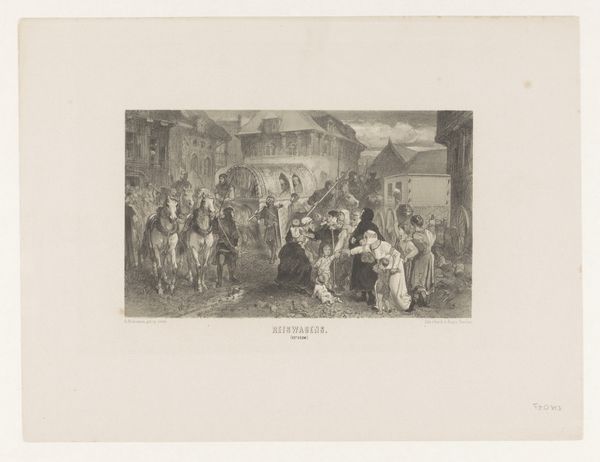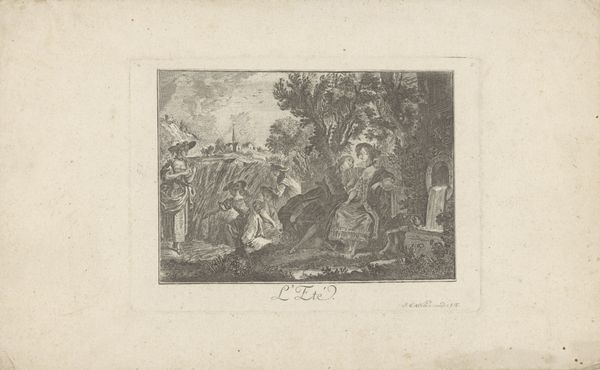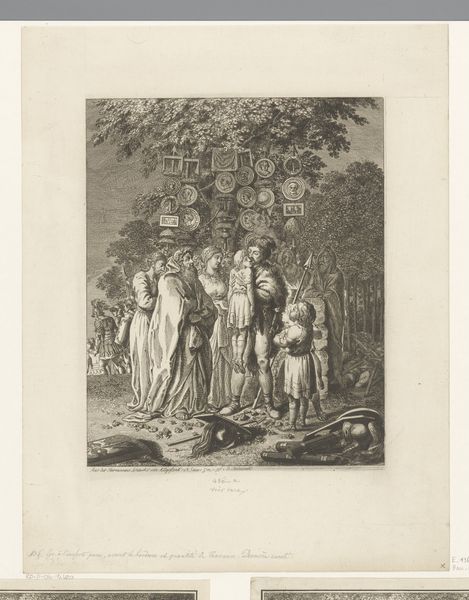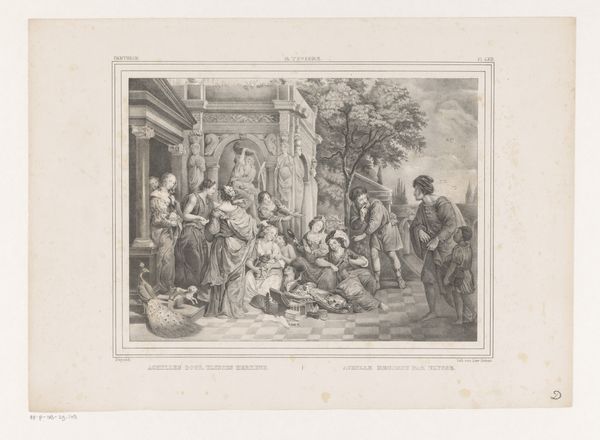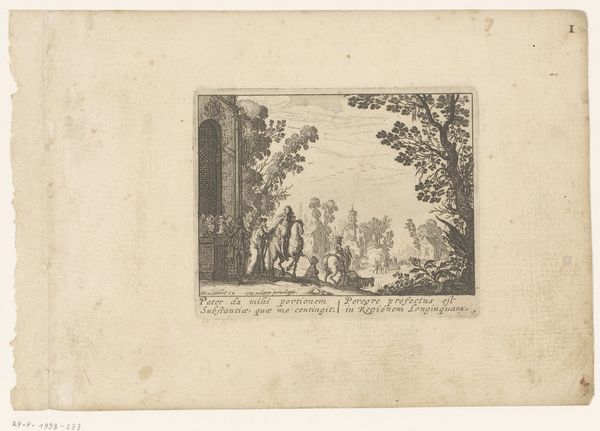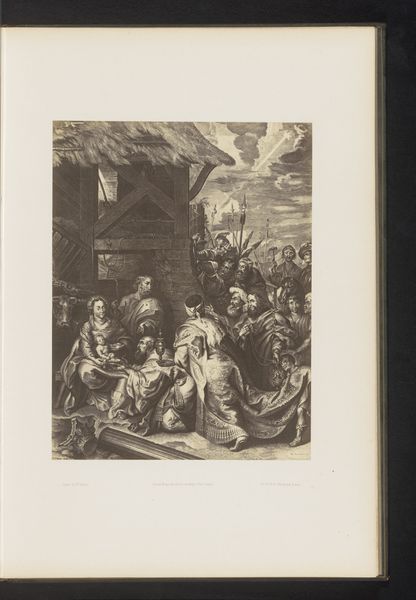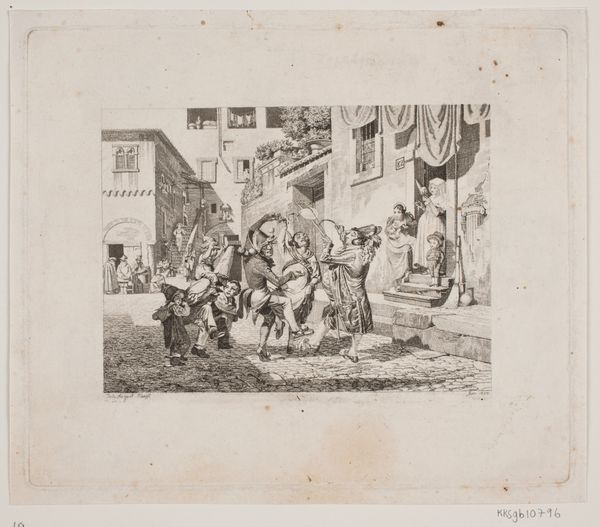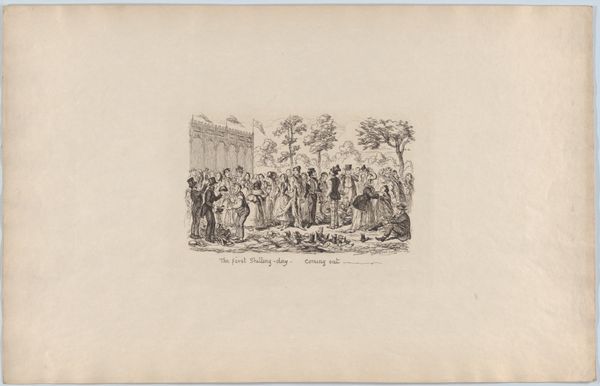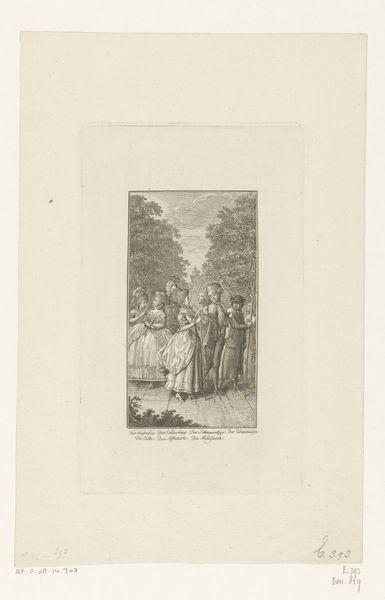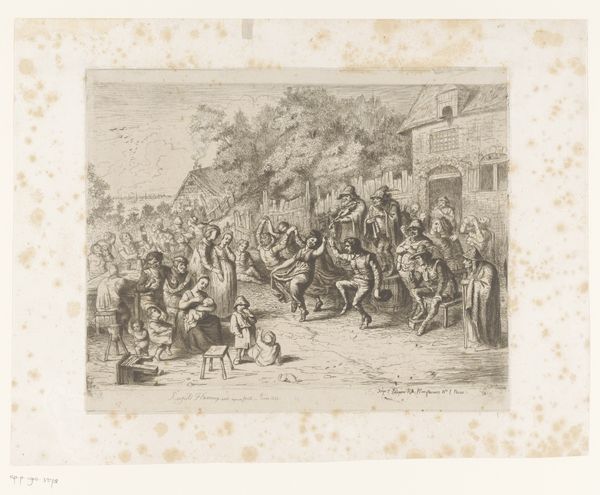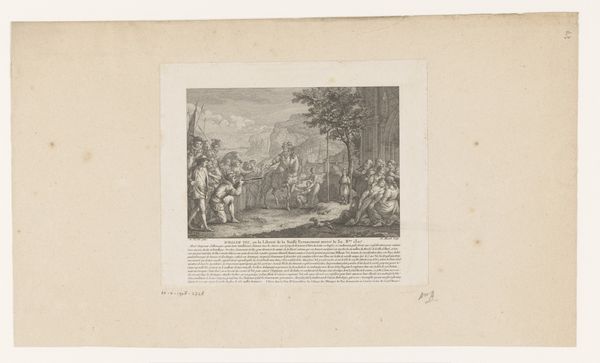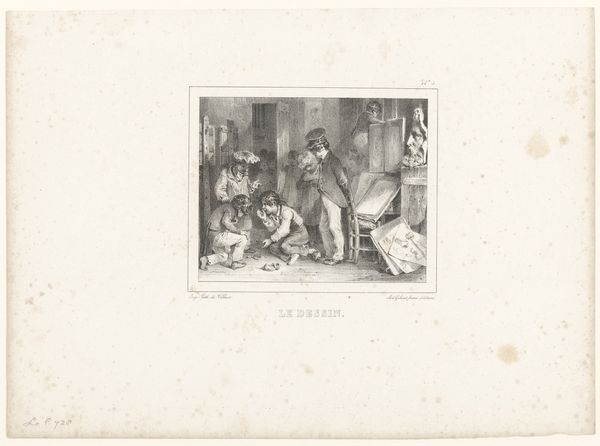
print, engraving
#
garden
#
medieval
# print
#
landscape
#
figuration
#
genre-painting
#
history-painting
#
engraving
Dimensions: height 198 mm, width 259 mm
Copyright: Rijks Museum: Open Domain
Curator: Let's discuss "Medieval Noblemen in a Castle Garden," a print created in 1876 by Jean-Baptiste Anthony, rendered through engraving. The scene shows what looks like a gathering of nobles enjoying a castle garden. What are your first impressions? Editor: The density of figures against the stark castle and garden strikes me. I wonder about the material process behind creating such intricate details, given its age and form. There is labour embedded within it. Curator: Exactly! It draws on genre and history painting to build an image of leisure, yet we can understand the historical context—the 19th-century's fascination with reinterpreting the medieval past through rose-tinted glasses. Editor: The clothing and ornamentation surely held particular value in that past, not to mention the sheer opulence of a castle and expansive grounds, signs of capitalistic enterprise for sure. What social relations do those signs signify? Curator: The arrangement certainly elevates the patriarchal dynamics of the time; power solidified through wealth and influence and demonstrated through display. What do you think of how labor informs those values and status arrangements in a tangible way? Editor: Thinking about it in terms of production and reception is fascinating. One could question the print's intended market as objects for capitalist consumerism that were used to signal good taste for example. What labour was needed to create the original artwork compared to distributing the engravings and what effect does it have to see it displayed in this contemporary gallery space? Curator: Fascinating questions. The creation, the consumption, and our current display are deeply influenced by power structures; class, race, and gender roles all play a part in interpreting art history. Editor: Thinking about labour and consumption has changed my perspective on the artwork's construction and subsequent interpretation. Curator: Understanding historical circumstances changes how one sees the artwork’s engagement within history.
Comments
No comments
Be the first to comment and join the conversation on the ultimate creative platform.
